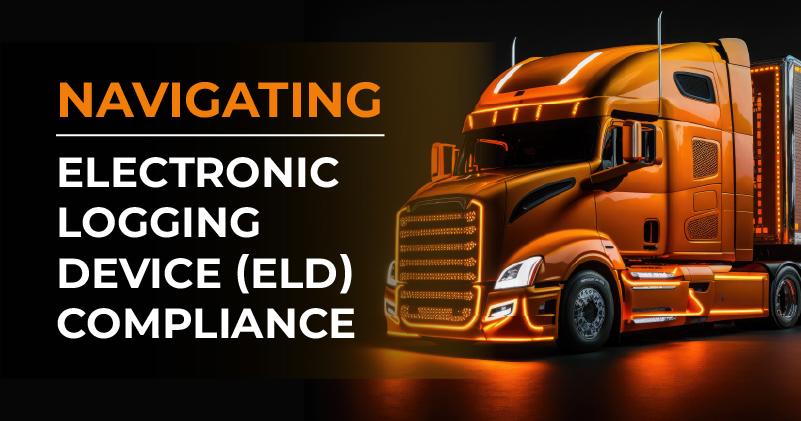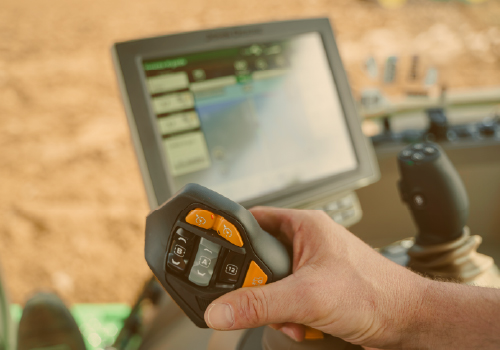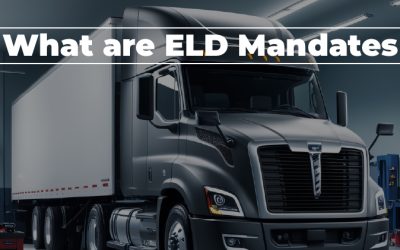
Electronic logging device (ELD) regulations have revolutionized the landscape of commercial trucking operations in the United States. While these rules offer benefits like enhanced safety and administrative efficiency, staying compliant can be complex. In this comprehensive guide, we’ll be navigating Electronic Logging Device (ELD) compliance and other essentials, exploring key requirements for drivers and carriers, discussing common compliance challenges, sharing real-world case studies, and providing actionable best practices to ensure seamless adherence to the rules.
Understanding ELDs
Electronic Logging Devices (ELDs), also referred to as electronic logs or elogs, are equipment that automatically documents driving time in commercial motor vehicles. These devices facilitate compliance with Hours of Service (HOS) regulations, leading to reduced fatigue, enhanced administrative efficiencies, and safer roads.
They establish a connection with commercial motor vehicles to monitor and record vehicle operations. Each driver is assigned a unique account to ensure accurate allocation of driving time. ELDs capture various data points including engine running time, vehicle location, mileage, and speed, with some devices capable of recording additional information such as idle time, vehicle diagnostics, and safety events. The collected data is utilized to generate Records of Duty (RODS), which document changes in driver duty status.
ELDs can either be dedicated devices designed specifically for electronic logging or applications installed on devices like smartphones. They can be installed either as fixed units within the vehicle cab or as mobile solutions. ELDs play a crucial role in helping trucking fleets adhere to regulations governing RODS and HOS records.
In the United States, most motor carriers are mandated to use ELDs instead of paper logs, although certain exemptions and exceptions exist. For example, exemptions may apply to drivers engaged in short-haul routes, tow operations, or those operating older vehicles predating the year 2000 as indicated by the vehicle identification number (VIN). In cases where an ELD malfunction, drivers may temporarily revert to using paper logs for a limited duration to allow for communication with the carrier and sufficient time for device repair or replacement.
Key ELD Requirements in the United States
The current Electronic Logging Device (ELD) regulations in the United States were implemented in December 2017 and have seen minor updates since then. These regulations encompass several key requirements:
- Mandating the use of registered ELDs by commercial drivers and carriers subject to Hours of Service (HOS) rules who are obligated to maintain Records of Duty Status (RODS).
- Establishing criteria for ELD performance and certification tests for providers.
- Requiring the utilization of only ELDs registered with the U.S. Federal Motor Carrier Safety Administration (FMCSA).
- Specifying the supporting documents that drivers and carriers must retain and the duration for which they should be maintained.
- Introducing technical features in the devices aimed at safeguarding drivers against harassment.
Certain exemptions may apply, including:
- Exemption for carriers not required to maintain RODS due to operating short-haul routes within 150 air miles of their base of operation.
- Allowance for drivers who use paper RODS for no more than eight days within each 30 days.
- Exemption for drivers conducting driveaway-towaway operations.
- Exemption for commercial vehicles with a model year before 2000.
ELD devices must be chosen from a list registered with the FMCSA, which periodically updates the list and provides instructions for motor carriers using devices that are no longer registered. In cases where devices malfunction due to known issues, motor carriers may be permitted by the FMCSA to temporarily maintain paper records until the issue is resolved or the device is replaced.
Drivers using ELDs are required to carry ELD information packets containing:
- An ELD user’s manual.
- Instructions explaining ELD data transfer mechanisms, HOS records production procedures, reporting ELD malfunctions, and maintaining HOS records during ELD malfunctions.
- An eight-day supply of RODS paper graph grids.
Motor carriers must retain and back up ELD data for six months, ensuring backups are stored on separate devices to protect driver privacy by sound business practices.
Federal ELD rules apply to interstate operations, while intrastate operations are governed by state laws and regulations, typically adopting U.S. federal ELD requirements by reference.
 Navigating ELD Compliance Challenges
Navigating ELD Compliance Challenges
Trucking fleets often encounter numerous challenges when striving for Electronic Logging Device (ELD) compliance. Here are some common issues and suggested solutions:
- Device Confusion: Older electronic logging devices, such as Automatic On-Board Recording Devices (AOBRDs), may not meet current ELD regulations and provide less comprehensive data. To ensure compliance, drivers, and carriers required to use ELDs should verify device certification through official channels:
- United States: Visit the ELD List on dot.gov.
It’s crucial to ensure that drivers are using the correct devices and fully understand their functionality.
- Device Authorization Recalls: Regulatory bodies like the FMCSA occasionally recall device registrations due to known issues. When selecting a new vendor, it’s essential to confirm that their device is registered and approved for use. Regularly monitoring your vendor’s status can ensure ongoing compliance with approved devices.
- Hours of Service Management Policies: Pre-existing fleet policies may have encouraged off-duty driving before ELD compliance became mandatory. For instance, dispatching schedules might not allow drivers enough time to find safe parking spaces. Utilizing automated route planning and dispatching systems can help ensure that drivers have sufficient time for parking, thus complying with off-duty requirements.
- Privacy Regulations: ELD data collection is governed by privacy laws and regulations that restrict the type of data that can be collected. Collaborate with legal and technical teams to ensure compliance with both privacy laws and ELD regulations. Avoid unnecessary data collection and review the data collected by your ELD provider and any third-party services to ensure compliance.
ELD Best Practices
To enhance Electronic Logging Device (ELD) compliance efficiently, adhere to established best practices. Here are the key steps for effective ELD implementation:
- Conduct HOS Reporting Audits: Begin by assessing the effectiveness of your current Hours of Service (HOS) reporting procedures to establish a baseline for transitioning to an ELD system.
- Establish Compliance Goals: Utilize the findings from your audit to define key performance indicators and set clear compliance objectives.
- Develop Hours of Service Policies: Formulate comprehensive HOS policies covering essential aspects such as monitoring, dispatching, adherence to regulatory limits on assignment hours, and implementing disciplinary measures for HOS violations.
- Provide ELD Training for Drivers: Integrate ELD training into your onboarding processes for new drivers and offer regular training sessions for all drivers to ensure they understand and comply with ELD requirements.
- Analyze Unassigned Driving Incidents: Identify contributing factors to unassigned driving instances, such as trucks being moved without a logged-in driver (e.g., yard jockeying or technician drive testing), and document these occurrences. Ensure all unassigned driving activities are appropriately annotated or assigned to a specific driver.
- Implement Dispatching and Tracking Automation: Leverage fleet management software to automate driver dispatching, proactively monitor operations, and facilitate efficient HOS alert procedures, thereby streamlining compliance efforts and enhancing operational efficiency.
Embrace ELD with TMS-Digital
Despite the challenges, embracing ELD regulations can enhance operational efficiency, streamline compliance, and optimize route planning and scheduling. Utilizing comprehensive solutions like the Omnitracs platform can facilitate regulatory compliance while improving overall fleet management.
Moreover, partnering with reputable ELD and Transportation Management System (TMS) providers can further facilitate compliance and optimize fleet management. TMS-Digital stands out as one of the top ELD and TMS software and solutions providers in the United States, offering innovative technologies to meet the evolving needs of the industry. Our comprehensive solutions not only ensure ELD compliance but also streamline operations, improve efficiency, and enhance overall fleet management.
In essence, by adopting best practices, leveraging advanced technologies from leading providers like TMS-Digital, and engaging with industry organizations like the CVSA, trucking fleets can successfully navigate ELD compliance challenges while driving operational excellence and safety on the road. Partner and take the lead today with TMS-Digital.









